
From Baggage Claim, go straight to the Farm Fresh-Fruit Stand!
Whenever I have a conversation with someone about their visit to the islands, they always tell me, with a dreamy look, how much they love the fruit in Hawai’i.
Some visitors know precisely what they want and head from the airport to their favorite place and get some fat, juicy mangoes or papayas for breakfast! Other visitors have been dreaming of the large, creamy avocados and head straight to get some with their knife and spoon in hand!
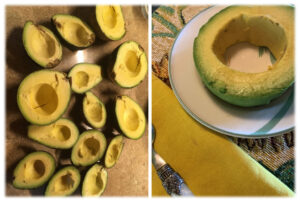
Since we all love the incredible fruit grown in Hawai’i, today we will talk about the tropical and exotic fruits that everyone can’t wait to return to. We will also give you some ideas on where to find them.
Hawaii’s sub-tropical climate is perfect for growing many types of exotic fruits. But before the first Hawaiians arrived, there were almost no edible native plants here!
When the Polynesians first settled in the Hawaiian Islands, they had to import the rootstock and seeds they would need to grow the foods that would nourish them. In Canoe Plants 1, 2, and 3, we talk about how the early Polynesians brought a variety of foods, animals, and clothing with them.
While they waited for the canoe plants and animals to multiply, these first immigrants to the islands had to rely heavily on finding food for themselves from the sea. Since they already knew the ocean so well, they had no problems. In addition to the rich abundance of fish and other forms of seafood, early Hawaiians were adept at harvesting and preparing other fruits of the sea in the plant family, such as limu (seaweed), to eat.
In addition to the food they could harvest from the sea, they knew how to forage for the existing edible ferns and small fruits at the higher elevations. The early Hawaiians chose wisely the plants they would bring to Hawai’i. Some canoe plants would produce food quickly, such as Ko (native sugar cane) and Mai’a (banana).
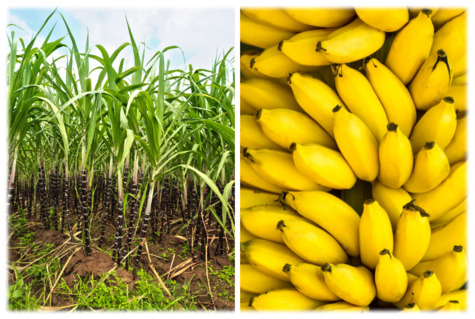
Many of the exotic fruits and edible plants that traveled hundreds of miles across the sea in ocean voyaging canoes are now considered endemic to the Hawaiian Islands. They have been growing in Hawai’i for hundreds of years.
Ready for some juicy, tropical fruit? Let’s go get some!
Roadside fruit stands are my number one choice for finding the freshest, cleanest tropical fruit and veggies. The fruit at the roadside stand is often grown right there and picked that day! It can be from small farms or home gardens and orchards that have an abundance and want to share.
They may be priced and accompanied by a little strong box to slip your dollar bills into. Others may suggest a donation. Sometimes, there is such an overflowing amount that you might find fruit in a box labeled, for FREE! You may even find a free sign that says, “Take one or two and leave some for others.”
Four Tropical Fruits you must try:
First, let’s start with the seasonal fruit. Yes, Hawai’i does have subtle seasons, and some fruits follow those seasons. They may need more daylight or heat to ripen or cooler weather to set fruit.
Mango – The King of Fruits!
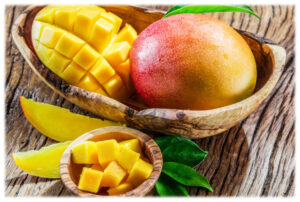
There are more than 60 varieties of mangoes grown in Hawai’i. They have a short harvest season that lasts from May into July. So don’t dilly-dally once mango season starts! Let the search for the best mango begin!
Hayden, Manila, Raposa, and Pirie are the most common varieties. You will find them at sea level on roadside stands since they do not grow well at higher elevations.
Unless you are ready to eat it right away, pick your mangoes for firmness and slightly less reds and oranges, so they can ripen in a day or so. When the skin color starts to turn more like the color of the sunset, and they are just becoming soft, they are ready to eat.
You can see 5 ways to cut a mango: HERE
We love to bring mangoes home in a variety of stages of ripeness. That way, the house is full of that exquisite mango fragrance for days!
Avocado – A Single-Handed Food Revolution!
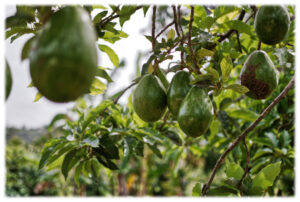
Hawaiian avocados are also somewhat seasonal. Technically, avocados can be harvested year-round, but they can be scarce some years, especially in the summer. Or, the ones you will find commercially available in the summertime are not that great, unless you know someone.
Most commercial avocados are available in a season from October through May. Over 200 varieties are growing throughout the islands during these months, but you will usually see about 5 to 10 types at the markets or fruit stands.
This delicious fruit will give you many health benefits.
Hawaiian avocados are insanely buttery and creamy if you get the good ones. The kahalu variety, grown on the rainy sides of the island, has the consistency of peanut butter; it’s so rich! Yes, we know they are loaded with good fat and therefore are not usually on anyone’s weight loss diet. They are also loaded with nutrients, rich in healthy minerals, and have lots of antioxidants.
The fine art of getting the perfect Avo!
Since there are such wide varieties of avocados, the different textures and densities of the skins can make it challenging to know when the fruit is ripe. A fail-safe method is to stick a toothpick into the top of the avocado; if the toothpick feels soft fruit inside, it should be ready without being overripe.
You don’t want to keep squeezing it to see if it is ripe, as they will bruise easily, even if they have tough skin. Nothing is more disappointing than waiting for your avocado to ripen, squeezing it too much, and opening it and finding it overripe and black and bruised inside! This is a true lesson of patience and using your powers of intuition.
The usual solution? Get more than you need until you learn how to tell when they are perfectly ripe!
Papayas – They Grow Year Round!
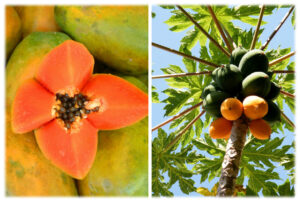
You will see papayas growing in backyards everywhere at lower elevations. They are so diverse. Eat them fresh or grate them green for green papaya salad. They make fabulous dressings and are excellent in smoothies. The taste and texture of the local papaya are vastly superior to what you will get in a market on the mainland.
Papayas are also full of healthy nutrients, vitamins, and antioxidants. I often take the inside of the skin, rub it on my face, and let it dry for a quick facial after delicious papaya topped with lime juice for breakfast.
Lychee – One of the Most Exotic Fruits You Will Have
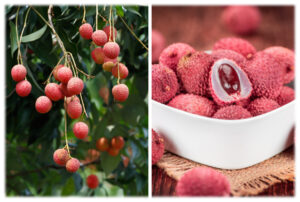
The first Lychee was brought from China in 1873. These beautiful fruits are often eaten right off the tree or out of the fridge. The small, delectable fruits are a favorite during their season. We are constantly asking each other, who has extra Lychee this year to give away?
They are also fun to eat out of the freezer once peeled. It is like a small ice cream treat. Pop the Lychee into your mouth, eat the yummy fruit, and spit out the seed!
Lychee must go in the refrigerator immediately. They will last in the fridge for 3 weeks and up to 3 months in the freezer.
Eat ALL these fruits to your heart’s content – you won’t find them back home.
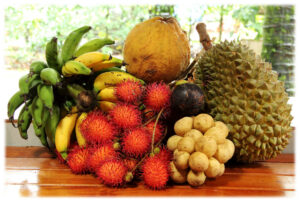
So many exotic and tropical fruits in Hawai’i are truly delectable! The experience of eating something you will rarely come across unless you are in Hawai’i, or other tropical/subtropical environments, is truly a treat.
If you are a fruit addict like me, take some time to try some other fruits. There are many more, which we will cover another time in another Fruit Blog. I imagine it will take many blogs to get through the menagerie of mouth-watering fruits grown in Hawai’i.
Naturally, the best selections of the freshest fruits are found at farmers markets and roadside stands. There they are picked for peak ripeness. There are farmers markets nearly every day in Hawai’i, thanks again to our temperate weather and the ability to grow many things year-round.
Here is a yearly schedule of what is available in Hawai’i all year – more or less.
SPRING: avocados, sapote, citrus, Lychee, mangosteen, star fruit
SUMMER: avocados, dragon fruit, egg fruit, jackfruit, Lychee, mango, passionfruit, soursop, cherimoya
FALL: breadfruit, citrus, dragon fruit, jackfruit, passionfruit, starfruit
WINTER: breadfruit, citrus, longan, mangosteen, rambutan
YEAR-ROUND: apple bananas, breadfruit, coconuts, noni, papaya, pineapple
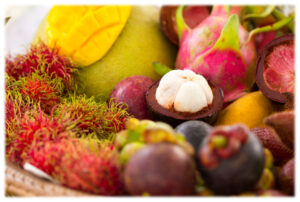
Don’t be afraid to try the exotic fruits of Hawaii. Yes, we know some have bizarre names, but they may be your favorite. Delight in the island’s sweets given by nature, and you will be richly rewarded. You could become a fruit connoisseur and make these unique fruits one of the focal points on your trips to Hawai’i!
Writing and Graphic Design by Sugandha Ferro Black
Photos courtesy of paid-for or free sources unless otherwise noted.